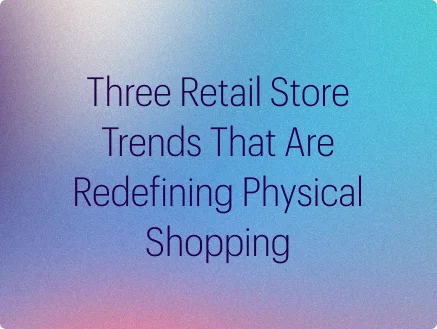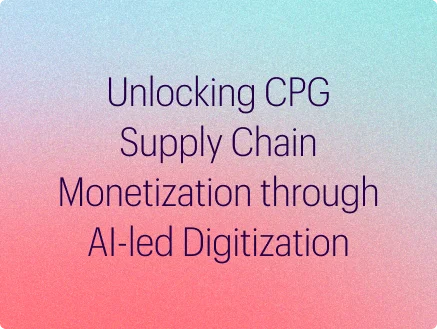Why are membership programs in retail growing in importance exponentially? Membership programs offer businesses more than just a transactional relationship—they serve as a strategic tool for using nuanced data about customer behavior, preferences, and patterns to create customized benefits. With this data, businesses can craft highly specific offers and communications that feel less like marketing and more like a natural extension of the customer’s journey. This level of precision not only boosts satisfaction but also creates a sense of being truly understood, fostering loyalty that goes beyond convenience and into genuine brand affinity. Modern consumers increasingly demand that companies not only recognize their preferences but also anticipate their needs, delivering hyper-relevant and contextually aware experiences. Retailers have a lot at stake, as a well-thought-out and developed reward program can yield significant benefits.
Over recent years, membership programs have become a strategic focus for major retailers, evolving from simple loyalty programs to comprehensive offerings with unique value propositions. As competition intensifies and customer expectations rise, these programs have become vital tools for differentiation and long-term growth. The shift towards a subscription-based economy, led by giants like Amazon Prime, Netflix, and Spotify, has made consumers more open to paying for added value and exclusive experiences. Members typically spend more than non-members due to the perceived value of exclusive benefits, transforming satisfied customers into loyal brand advocates. The sense of exclusivity and community these programs create fosters positive word-of-mouth, attracting new customers organically and enhancing the retailer’s reputation.
The Role of Data in Driving Membership Success
Retailers today have unprecedented access to vast amounts of information about their customers, from purchase histories and browsing behaviors to preferences and engagement patterns. When properly utilized, this data turns into a potent instrument that can boost membership programs’ efficacy and promote long-term success.
One of the most compelling advantages of leveraging data in membership programs is the ability to offer highly personalized experiences. Since customers feel valued and understood, this level of personalization not only enhances the shopping experience but also increases the likelihood of repeat purchases. Data plays a crucial role in optimizing the operational aspects of membership programs. By analyzing patterns in customer behavior, retailers can make informed decisions about inventory management, pricing strategies, and marketing efforts.
Predictive and Prescriptive Analytics, a data-driven approach that uses historical data and machine learning algorithms to forecast future behaviors, has become a game-changer for membership programs. Retailers can predict member demands, spot potential churn risks, and proactively connect with customers to improve their experience by examining historical customer interactions.
Driving Customer Experience Through Operational Excellence
Customer experience can only flourish with the success of operational excellence, and they are both key factors to make a membership program work exceptionally well. The challenge posed for retailers now lies in finding the right balance between both of these factors to ensure a high-quality delivery of the program.
Operational excellence focuses on carrying out business functions smoothly as well as efficiently managing and ensuring that every part of the customer journey — from order support to fulfillment and support — runs steadily. Customer experience is concerned with how consumers view their experiences interacting with the brand.
Investing in operational excellence does not merely enhance efficiency—it also empowers employees to provide better service. Streamlined systems reduce errors and delays, enabling staff to focus on creating meaningful interactions with customers. Similarly, a seamless operational framework supports scalability, allowing retailers to consistently deliver exceptional experiences even as customer demands grow. By prioritizing both operational rigor and customer-centricity, businesses can position themselves as leaders in driving loyalty and long-term growth. Ultimately, when operational excellence and customer experience are aligned, retailers can consistently meet member expectations, enhance satisfaction, and build long-term loyalty. This alignment sets the foundation for concepts like the “perfect order,” where every interaction is executed flawlessly, embodying both operational efficiency and exceptional customer service.
The Perfect Order as a Concept
We created a concept known as the perfect order for a client who was struggling with operational issues. This concept focuses on ensuring premium service to customers enrolled in their membership program. This was defined by the four main features:
- No delayed orders
- No substituted items
- No missing items
- No cancellation of orders (entire order canceled)
All customer orders placed via the retailer’s website or app were then evaluated on these parameters to track their impact on customer sign-ups and NPS ratings.
After thorough research, we found out that the difference in propensity of membership conversion between customers who have received perfect orders versus those who have had a cancellation experience in their trial period while ordering is approximately 80%. The impact of the other “imperfections” on the conversion rate was also material.
Member Centric Perfect Order Strategy
Leading retailers are adopting specialized approaches for their premium members, achieving 99.5% perfect order rates for this crucial segment. It is very important to adopt methods that ensure that members are the top priority while creating a perfect order strategy. We can achieve this in four ways, starting with efficient inventory management, where the key is member satisfaction. Successful programs prioritize member orders in their supply chain operations. One major retailer increased member satisfaction by 40% by implementing steps like priority access to high-demand items, predictive stocking systems based on member purchase patterns, and reserved inventory pools for member orders.
Another aspect we need to focus on would be premium delivery operations. Here, members with a higher number of points get dedicated delivery systems. This is accompanied by features such as exclusive delivery time slots, priority rerouting during high-demand periods, and real-time tracking with minute-by-minute updates.
Lastly, we can implement enhanced recovery protocols so that when issues arise, member recovery is given immediate and utmost importance at premium quality. Including benefits such as automatic compensation, personal concierge support for affected members, and rewarding double points or incentives for any inconvenience can help in increasing membership conversation rates.
Amplified Impact on Members
Premium loyalty members respond differently to operational failures than regular customers, and understanding these differences is crucial for membership-driven retailers:
Delivery Delays
While standard customers accept a 1-day delivery window, membership program subscribers expect precision. When members select a specific one or two-hour window, 73% consider any deviation a serious service failure. More concerning, these members are three times more likely to share negative experiences on social media, citing their premium status as an aggravating factor.
Product Substitutions
Premium members, who often build regular shopping routines around specific products, show 60% lower substitution acceptance rates than non-members. When their carefully planned grocery orders arrive with unexpected substitutions, 55% report feeling that their membership has lost value, even if the substituted items are of higher quality.
Order Cancellations
Our data shows that 90% of premium program members who experience two canceled orders within a three-month period will evaluate competitive programs. The psychological impact is clear: members view cancellations as a breach of their premium service contract.
This naturally leads us to explore how operational processes like the “perfect order” concept can further enhance the membership experience, ensuring every interaction meets or exceeds customer expectations.
Implementation Road Map
The future of retail membership programs hinges on operational excellence. As loyalty programs compete for customer loyalty, the ability to deliver perfect orders consistently will determine market leadership. Our analysis shows that leaders in member operations can expect:
- 30% higher membership lifetime value
- 50% lower membership churn
- 80% higher member satisfaction scores
- 40% more member-to-member referrals
Membership programs can’t afford to treat operational excellence as an aspiration—it must be a guarantee. Organizations that invest in member centric operations will build sustainable advantages in the increasingly crowded membership economy.
For retailers implementing or expanding membership programs, the message is clear: operational excellence isn’t just about efficiency—it’s about delivering on the premium promise that members pay for.
Find out how we helped a retail client solve their problems with operational efficiency and improve their customer membership rates by reading our case study.



